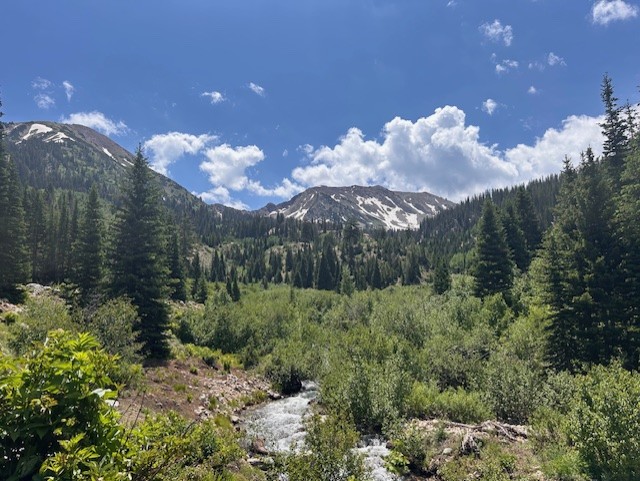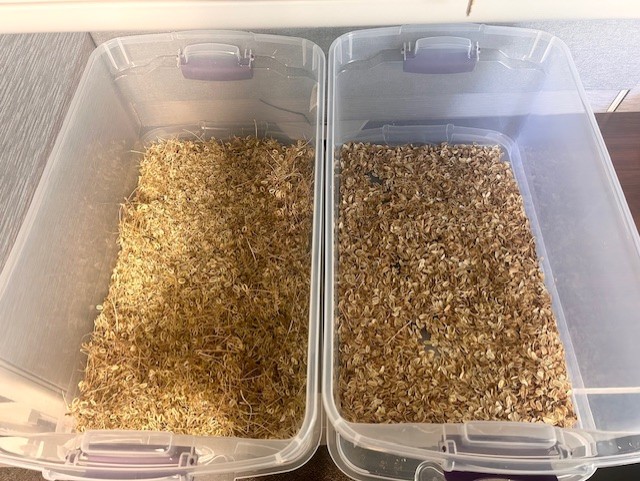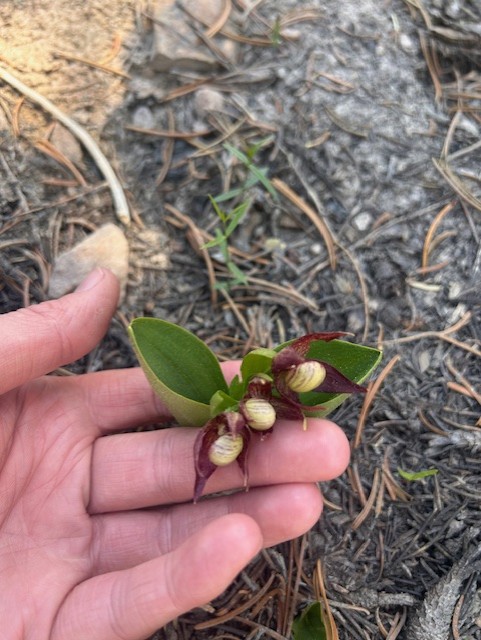The field season has just begun and there is so much to be done. We have had the opportunity to participate in a few field surveys with the botanist crew on our forest, during which time we have been scouting for potential seed collection populations. Last week in particular, we scouted along the way to a botanist survey that needed to be completed alongside the dam of a small mountain lake. That’s how I learned that the word “road” is used very loosely by forest service folk. Personally, I think the term “rocky hill of death” might be more applicable for this particular instance, but hey, what do I know? I’m just an intern.
The following week, after we gave our internal organs time to settle back into their rightful places, we pursued some coordinates for potential seed collection populations. These we obtained from looking at local herbarium records. We were able to track down a population of Penstemon eatonii. This was particularly exciting because at least 100 times before we had enthusiastically announced that we spotted populations of Penstemon eatonii from the car, only to find upon exiting the car that they were actually Scarlet Star Gilia. Unfortunately, the Penstemon eatonii population was too small for seed collection, but it was a productive trip, nonetheless.

Upon similar scouting ventures, we were lucky to find many harvestable populations for seed collection. To date, we have harvestable populations for the following species: Lomatium grayi, Lomatium dissectum, Lomatium triternatum, Balsamorhiza sagittate. Artemisia tridentata, Purshia tridentata, Eriogonum umbellatum, and Eriogonum heracleoides. Now that we have scouted the populations, it’s simply a matter of checking up on them periodically so as not to miss the ideal collection period.
Last week, we completed our first seed harvest which was of Lomatium grayi. The collection went well, although it was taxing work because it was so hot that day. The population itself was somewhat small so it only took us a few hours to collect 20% of the available seed. It’s so exciting to have finally harvested. I hope that those little seeds go on to produce many more native seeds to aid in restoration projects across the forest. Currently, the seeds are laid out to dry in our office, gracing us with a fragrant celery-like smell. Thank you Apiaceae.

Perhaps one of my favorite experiences of the internship thus far, came in the form of an element occurrence survey. We were asked to check up on a population of Brownie Lady’s Slippers (Cypripedium fasciculatum) that was put in our GIS system several years ago. The species is on our sensitive species list for the forest. The trip to get there was long and often felt treacherous. Again, I learned that the word “road” is relative around here. Once at the top of the mountain it was only a short hike to the survey location. It was clear that the fuels crew had been working in this area in months past, so we had concerns about being able to find the Lady’s Slippers. However, we were happy to see that the small population is still thriving and that it has migrated up the slope a little. As a budding botanist, finding rare plants feels akin to finding rare gems, and always warrants a photo opt.

Our Lomatium dissectum population should be ready to harvest either this week or next. Until then, we will continue scouting for more populations and monitoring the ones that we already have.
